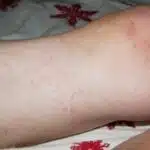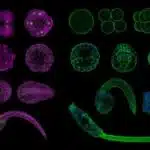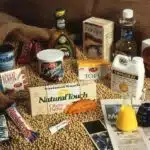As a laundry care expert, I have seen many different types of stains on clothing, but few are as stubborn and unsightly as cheese sauce stains. Whether you spilled some nacho cheese on your shirt during a football game or accidentally dripped some queso on your pants while enjoying tacos with friends, these stains can be difficult to remove without the proper techniques.
Fortunately, with the right approach and a little bit of patience, removing cheese sauce stains from clothes is possible. In this article, we will explore the most effective methods for tackling this common laundry challenge. From pre-treating the stain to washing and drying your clothes properly, we will provide step-by-step guidance to help you restore your favorite garments to their former glory. So whether you are a busy parent trying to keep up with an active family or simply someone who wants to take better care of their clothing, read on for our top tips on how to remove cheese sauce stains from clothes and more.
Understanding Cheese Sauce Stains
Cheese sauce stains can be a tough challenge to remove from clothes. These stains are caused by the ingredients found in cheese sauce, such as oil, milk, and cheese. When these substances come into contact with fabric, they can leave behind an unsightly mark that is difficult to remove. However, with proper knowledge and technique, you can effectively tackle these stubborn stains.
A common mistake in treating cheese sauce stains is not acting quickly enough. The longer the stain sits on the fabric, the harder it will be to remove. As soon as a cheese sauce stain is noticed on your clothes, it’s important to take action right away. Waiting too long could cause the stain to set into the fibers of the fabric and become more difficult to remove.
Another important factor in removing cheese sauce stains is knowing what type of fabric you are dealing with. Different fabrics require different cleaning techniques and products. Treating a delicate silk blouse differently than a durable cotton t-shirt can make all the difference in successfully removing a cheese sauce stain without causing damage or discoloration. In the next section, we will explore how to identify the type of fabric you have and how best to approach removing cheese sauce stains based on that information.
Identifying The Type Of Fabric
Fabric is like a canvas, and each weave tells a unique story. The way it stretches, breathes, and drapes all come together to create an experience that is both tactile and visual. Identifying the type of fabric you’re working with is the first step in determining how best to care for your clothes. This knowledge will help you to choose the right detergents and techniques that will not only prevent stains but also maintain the integrity of your clothes.
Cotton, silk, wool, polyester, rayon – these are just some of the many fabrics out there. Each has its own quirks and characteristics that need careful attention when washing or treating stains. For example, cotton is highly absorbent and can easily retain oil-based stains if not pre-treated properly. On the other hand, silk requires gentle handling as it can easily become damaged by harsh chemicals or detergents.
Choosing detergents appropriate for your fabric type is essential in preventing staining on clothes. Some detergents may contain bleach or other harmful chemicals that can damage certain types of fabrics permanently. Be sure to read labels carefully and opt for mild detergents whenever possible.
Identifying the type of fabric before attempting any stain removal process will help you determine which pre-treatment methods are appropriate for your clothes. In the next section, we’ll explore some simple yet effective ways to remove cheese sauce stains from different types of fabrics without causing any damage in the process.
Pre-Treating The Stain
After identifying the type of fabric, the next step in removing cheese sauce stains from clothes is pre-treating the stain. It’s important to act quickly and not allow the stain to set in. For best results, pre-treat the stain as soon as possible.
Here are some alternative methods for pre-treating cheese sauce stains:
- Dab the stain with a clean cloth or paper towel to remove any excess sauce.
- Apply a small amount of dish soap directly to the stain and rub gently with your fingers.
- Rinse the area with cold water and repeat if necessary.
- If the stain persists, try using white vinegar or rubbing alcohol on a clean cloth to dab at the stain.
Common stains like cheese sauce can be difficult to remove, but with proper care and attention, it is possible. Remember to always read the care label on your garment before attempting any removal methods.
In order to fully remove a cheese sauce stain, using a stain remover may be necessary. The next section will cover how to properly use a stain remover on stubborn stains.
Using A Stain Remover
When it comes to removing cheese sauce stains from clothing, using a stain remover can be an effective solution. Stain removers are specially formulated to break down and lift tough stains from fabric fibers. There are a variety of stain remover options available on the market, including sprays, gels, and powders. Each type of stain remover has its own unique benefits and drawbacks.
One alternative to store-bought stain removers is to make your own DIY solution. DIY stain removers can be made using common household ingredients such as baking soda, vinegar, and dish soap. These solutions can be just as effective as store-bought options but may require more effort to prepare and apply to the stained area.
For those who prefer a more natural approach to laundry care, there are also a variety of stain remover alternatives that are eco-friendly and non-toxic. Some popular options include oxygen bleach, enzyme-based cleaners, and citrus-based cleaners. These alternatives can be gentler on fabrics while still effectively removing stains.
Transition into subsequent section: Mixing a homemade solution is one way to remove cheese sauce stains from clothes without relying on store-bought products or harsh chemicals.
Mixing A Homemade Solution
Making your own solution for removing cheese sauce stains from clothes is a cost-effective and beneficial alternative to commercial stain removers. DIY solutions not only save you money, but they also allow you to control the ingredients used and avoid harsh chemicals that can damage fabrics. Plus, many household items like vinegar and baking soda have natural properties that make them effective stain fighters.
One option for a homemade solution is mixing equal parts of white vinegar and water in a spray bottle. Simply spray the affected area with the solution, let it sit for 5-10 minutes, then blot with a clean cloth until the stain lifts. Vinegar is a natural deodorizer and has mild bleaching properties that can help break down tough stains without damaging fabric fibers.
Another effective homemade solution for cheese sauce stains is combining dish soap with hydrogen peroxide. Mix one tablespoon of dish soap with two tablespoons of hydrogen peroxide in a small bowl. Apply the mixture to the stained area and gently rub it in using a clean cloth or soft-bristled brush. Let it sit for 5-10 minutes before washing as usual. Dish soap has powerful grease-cutting abilities while hydrogen peroxide acts as a natural bleach to remove stubborn stains without fading colors.
To further enhance the cleaning power of your homemade solution, consider adding baking soda into the mix. Baking soda acts as an abrasive agent that helps scrub away dirt and grime while also neutralizing odors. In the next section, we will explore how to apply baking soda to your cheese sauce stain removal process without causing damage to your clothing.
Applying Baking Soda
After mixing a homemade solution to remove cheese sauce stains from clothes, the next step is to apply baking soda. Baking soda is a natural and effective cleaning agent that has been used for decades. It is particularly useful for removing stubborn stains like cheese sauce. The benefits of using baking soda are numerous: it is affordable, readily available, and non-toxic.
To apply baking soda to the stain, start by sprinkling a generous amount onto the affected area. Then, rub it gently with a soft-bristled brush or your fingers. This will help to loosen the stain and absorb any excess grease or oil in the fabric. Let the baking soda sit on the stain for at least 30 minutes before washing as usual.
Alternative methods to using baking soda include using vinegar or lemon juice. Vinegar is also an effective cleaning agent that can help break down tough stains like cheese sauce. To use vinegar, mix equal parts water and vinegar and apply directly to the stain. Let it sit for about 10 minutes before washing as usual. Lemon juice can also be used in place of vinegar but may not be as effective on tough stains.
Next up – using vinegar! Vinegar is another natural cleaning agent that has been used for centuries to clean and disinfect clothes. Unlike baking soda, which absorbs grease and oil, vinegar breaks down stains chemically through its acidic properties. In the next section, we will discuss how to use vinegar to remove cheese sauce stains from clothes effectively.
Using Vinegar
Vinegar is an effective cleaning agent that can help remove cheese sauce stains from clothes. It is a mild acid that can break down the stain and dissolve it away without damaging the fabric. To use vinegar, simply mix equal parts of white vinegar and water in a spray bottle, then spray it onto the stained area and let it sit for 10-15 minutes before washing as usual.
Cleaning with lemon is another alternative solution for removing cheese sauce stains from clothes. Lemon juice contains citric acid which has natural bleaching properties that can help lift the stain out of the fabric. To use lemon juice, cut a fresh lemon in half and rub it directly onto the stained area, then let it sit for 5-10 minutes before washing as usual.
If vinegar or lemon juice doesn’t work for removing the cheese sauce stain, there are other alternative solutions to try. For example, you can try using baking soda or dish soap to pre-treat the stain before washing. Simply make a paste with baking soda and water or apply dish soap directly onto the stain and let it sit for 10-15 minutes before washing as usual.
Transitioning into the subsequent section about soaking the garment, it’s important to note that if none of these methods work for removing the cheese sauce stain, soaking the garment may be necessary. Soaking helps loosen up stubborn stains by allowing them to soak in a solution of water and detergent for an extended period of time.
Soaking The Garment
After removing as much of the cheese sauce as possible, it’s time to soak the garment. Soaking is an excellent way to remove stains that have set into fabric. The importance of time cannot be overstated when it comes to soaking stained clothes. The longer you soak the garment, the more likely it is that the stain will come out.
When soaking your clothes, make sure to use cold water. Hot water can cause cheese sauce stains to set into the fabric permanently. Fill a sink or basin with enough cold water to cover the garment completely. Add a small amount of laundry detergent and mix well. Then, submerge the garment in the soapy water and let it soak for at least 30 minutes.
The long term effects of not properly soaking a stained garment can be damaging. If you don’t take care of stains right away, they can set in and become much harder to remove later on. Additionally, not using cold water during soaking can cause discoloration or even shrinkage of certain fabrics. Soaking is an essential step in removing cheese sauce stains from clothes and should not be skipped if you want your garments to look their best after washing them.
Now that your garment has soaked for an adequate amount of time, it’s time to move on to washing it properly. But before we dive into that step, there are a few things you need to keep in mind while preparing your washing machine for optimal cleaning results…
Washing The Clothes
After successfully soaking the garment, it’s time to move on to the next step: washing the clothes. Washing will help remove any remaining cheese sauce stains and leave your garment looking clean and fresh. However, it’s important to use the best techniques to avoid damaging your clothes and ensure that the stain is completely gone.
One common mistake people make when washing clothes is using hot water. Hot water can set stains, making them even harder to remove. Instead, use cold or lukewarm water when washing your garment. Additionally, be sure to check the care label of your clothing before washing it as some fabrics may require delicate or special care.
When choosing a detergent, it’s important to choose one that is suitable for removing tough stains like cheese sauce. Look for detergents that are specifically labeled as stain fighters or contain enzymes that break down protein-based stains like cheese sauce. Avoid using bleach on colored clothing as it can cause discoloration and damage the fabric.
In summary, proper washing techniques are crucial in removing cheese sauce stains from clothing. Avoid using hot water and choose a detergent that is labeled as a stain fighter or contains enzymes for protein-based stains. By following these tips and avoiding common mistakes, you can effectively remove cheese sauce stains from your clothes without causing any damage. In the next section, we will discuss how choosing the right detergent can further enhance your laundry routine.
Choosing The Right Detergent
When it comes to removing cheese sauce stains from clothes, choosing the right detergent is crucial. Not all detergents are created equal, and some may not be effective in removing tough stains. The best detergents for cheese sauce stains are those that contain enzymes, as enzymes break down protein-based stains such as cheese sauce.
One option for an effective detergent is Tide Original Liquid Laundry Detergent. This detergent contains enzymes and is specially designed to remove tough stains. Another option is Persil ProClean Stain Fighter liquid laundry detergent, which also contains enzymes and has been proven to effectively remove stubborn stains.
For those who prefer eco-friendly options, Seventh Generation Liquid Laundry Detergent is a good choice. It is made with plant-based ingredients and does not contain any synthetic fragrances or dyes. It also contains enzymes to help break down stains, including cheese sauce.
Now that we have discussed the best detergents for removing cheese sauce stains from clothes, the next step is drying the garments without setting the stain further into the fabric.
Drying The Garments
Air-drying is the most gentle and effective method of drying garments, and is best used for delicate fabrics. Heat-drying is a more efficient method of drying garments, however, it is not suitable for all fabric types and should be used with caution. Heat-drying can also cause damage and shrinkage of certain fabrics, so it is important to check the care label for instructions. It is best to have a variety of drying methods available to ensure the best care for all types of garments.
Air-Drying
Air-drying is a great way to dry garments, especially those with cheese sauce stains. Not only is it eco-friendly, but it also helps preserve the fabric’s quality and color. There are several ways to speed up air drying, such as hanging clothes outside on a sunny and windy day or using a fan to circulate the air.
One of the benefits of air drying over machine drying is that it reduces the risk of shrinkage and damage to delicate fabrics. Machine drying often subjects clothes to high heat, which can cause them to lose their shape and become prone to pilling or fading. Air drying, on the other hand, allows clothes to dry more gently and naturally without subjecting them to harsh heat or friction.
Another benefit of air drying is that it can save you money on your energy bills. While machine drying can be convenient, it also consumes a lot of electricity. By opting for air drying instead, you can reduce your carbon footprint and help protect the environment while still getting your clothes clean and fresh. With these benefits in mind, air drying is definitely worth considering as an alternative to machine drying when removing cheese sauce stains from clothes.
Heat-Drying
When it comes to drying garments, air-drying is often recommended to prevent heat damage and preserve the fabric’s quality. However, some people prefer using a dryer as it offers a faster and more convenient way of drying clothes. Heat-drying is a popular method that uses high temperatures to remove moisture from the garments quickly. While it can be effective in removing cheese sauce stains, it also poses some risks to delicate fabrics.
Heat-drying can cause shrinkage in clothes made of natural fibers like cotton or wool, especially if they are not labeled as dryer-safe. The heat can also damage synthetic fibers like polyester or nylon, leading to pilling or melting. To prevent heat damage, it is important to follow the manufacturer’s instructions on the garment’s care label and avoid using high heat settings when drying clothes. Additionally, using alternative drying methods like air-drying or low-heat settings can help prevent damage while still effectively removing cheese sauce stains.
In conclusion, while heat-drying is a popular method for drying clothes quickly, it can pose risks to delicate fabrics and cause shrinkage or damage. By following garment care instructions and using alternative drying methods like air-drying or low-heat settings on dryers, you can effectively remove cheese sauce stains without compromising the quality of your clothes. Prevention is always better than cure when dealing with laundry care, so take extra care in choosing the right method for your garments’ needs.
Checking For Residual Stains
Drying the garments was just the beginning of this cheese sauce stain removal process. Now, it’s time to check whether any residual stains are left on your clothes. Don’t be surprised if you find some stubborn spots that won’t go away easily. That’s where stain removal techniques come in handy.
Before you start applying any chemicals or detergents, it’s crucial to read the care label of your garment. Some fabrics require special treatment that may not be suitable for others. For instance, using bleach on a delicate silk blouse will only make things worse. Therefore, always follow the instructions given by the manufacturer.
Once you have determined the appropriate treatment for your stained garment, it’s time to get rid of those unsightly marks once and for all. There are various methods available, such as spot cleaning with vinegar or baking soda, using specialized stain removers, or even taking professional help if required. Remember that different stains may require different treatments and persistence is key when removing stubborn ones.
Stain removal techniques and fabric care tips can save your favorite clothes from being ruined forever. However, prevention is always better than cure. So before digging into that cheesy dip again, take some measures to avoid future stains like wearing an apron while cooking or eating carefully. A little caution goes a long way in keeping your clothes looking fresh and clean for longer periods of time.
Tips For Prevention
Preventing stains is the best way to avoid dealing with them later. One way to prevent cheese sauce stains from ruining clothing is to be mindful while eating and take precautions such as wearing a bib or using a napkin. Additionally, it’s essential to wear stain-resistant clothing when eating messy foods like cheese sauces.
Stain-resistant clothing is made with special materials that repel liquids and prevent them from causing permanent damage. These clothes are perfect for anyone who often deals with messy foods or works in environments where stains are common. It’s important to note that not all garments are created equal, so it’s essential to look for those designed specifically with stain resistance in mind.
Another way to prevent stains is by washing clothes regularly. Even if there aren’t visible stains on the clothing, dirt and oils can build up over time and make the fabric more susceptible to staining. It’s also essential to keep an eye out for any potential stains before tossing clothes in the wash as some require pre-treatment before washing.
- Use a napkin or bib while eating messy foods.
- Wear stain-resistant clothing when eating or working around potential stain-causing substances.
- Wash clothes regularly, even if no visible stains are present.
- Check garments for potential staining before washing.
- Be mindful of what you’re wearing when engaging in activities that may cause staining.
With these tips in mind, preventing cheese sauce stains on clothing becomes much easier. However, accidents do happen, and sometimes even the most careful people end up with set-in stains. In the next section, we’ll explore how to deal with these types of stubborn marks on your clothes effectively.
Dealing With Set-In Stains
Identifying Set-In Stains: A set-in stain is a stain that has had time to become embedded into the fabric and can be identified by discoloration or by feeling a residue on the fabric. Removing Set-In Stains: The most effective method for removing set-in stains is to use a combination of soaking, pre-treating, and laundering. Preventing Set-In Stains: Proper care of garments can help to prevent set-in stains. Care instructions should be followed to maintain the integrity of the fabric and prevent staining. Additionally, prompt laundering of stained items can help to avoid set-in stains.
Identifying Set-In Stains
Identifying Set-In Stains is crucial for effectively dealing with stubborn stains on clothes. Removing old stains can be difficult, especially when they have set into the fabric. It is important to identify whether the stain has set in or not before attempting any cleaning methods.
Preventing future stains from setting in is key to keeping clothes looking their best. The longer a stain sits on a garment, the harder it becomes to remove. Identifying the type of stain and treating it immediately can prevent it from setting in.
To identify set-in stains, carefully inspect the stained area. If the stain has been there for a while and has not been treated properly, it may have set into the fabric fibers. Look for discoloration or an area that feels stiff or crusty to the touch. If you are unsure if a stain has set in, try blotting it with a damp cloth. If the color transfers onto the cloth, then there’s still hope for removing it. If not, then you may need to employ more aggressive cleaning methods such as soaking or using a specialized stain remover.
In conclusion, identifying set-in stains is an important step in dealing with tough stains on clothes. Preventing future stains from setting in by treating them immediately can save time and effort later on. By following these tips and tricks, you can keep your clothes looking their best and avoid having to throw away garments prematurely due to stubborn stains.
Removing Set-In Stains
Removing tough stains is a challenging task, especially when they have set into the fabric. However, there are various methods and professional cleaning options available that can help to remove even the most stubborn of stains. Removing set-in stains requires patience, effort, and the right techniques.
One way to remove set-in stains is to soak the garment in a solution of water and detergent. Letting the garment sit in the solution for a few hours or overnight can help to loosen the stain from the fibers. For best results, use a detergent that is specifically formulated for removing tough stains. After soaking, rinse the garment thoroughly and launder as usual.
Another effective method for removing set-in stains is to use a specialized stain remover. There are many products on the market that are designed to target specific types of stains such as ink, blood, or grease. Ensure you follow all instructions carefully when using these products and test them on an inconspicuous area before applying them directly to the stained area.
In conclusion, removing set-in stains requires time and effort but with patience and perseverance, it’s possible to restore garments back to their original condition. By utilizing methods like soaking in detergent solutions or using specialized stain removers, you can tackle even some of the toughest stains. Remember always to check care labels before trying any new cleaning methods!
Preventing Set-In Stains
Preventing set-in stains is an essential step in maintaining the quality of your garments. One effective way to prevent tough stains is through pre-washing techniques. Before laundering, inspect the garment for any visible stains and treat them immediately using a stain remover or detergent. Also, avoid rubbing or scrubbing the stained area as it can spread the stain and make it more challenging to remove.
Another preventive measure is to choose fabrics that are known for their stain-resistant properties. There are many types of textiles available in the market that repel liquids and resist staining such as polyester, nylon, and wool. These fabrics are ideal for garments that are prone to spills or accidents like work uniforms or children’s clothing.
It’s also important to follow care instructions on garment labels carefully. Over-washing or using harsh chemicals can damage delicate fabrics and make them more susceptible to stains over time. By following these preventive measures, you can reduce the likelihood of dealing with set-in stains in the future and prolong the life of your clothes.
Conclusion
As a laundry care expert, I can say that stain prevention is always preferable to emergency stain removal. One effective method is to treat stains as soon as they happen, especially for highly staining foods like cheese sauce. Blot the affected area with a clean cloth or paper towel to remove excess moisture, then apply a stain remover or pre-treatment solution before washing the garment according to its care label instructions.
However, in case of emergency stain removal, it is important to act fast and avoid rubbing the stain further into the fabric. Instead, gently blot the area with a clean cloth or paper towel until no more of the stain transfers onto it. Then apply a small amount of liquid detergent or stain remover directly onto the affected area and let it sit for several minutes before washing it according to its care label instructions.
In conclusion, whether you are dealing with an emergency cheese sauce stain removal or trying to prevent them from happening in the first place, taking immediate action is key. Remember to treat stains as soon as possible and use appropriate cleaning methods for each type of fabric and food stain. With these tips in mind, you can keep your clothes looking their best while enjoying all your favorite cheesy dishes without worry.
Conclusion
Cheese sauce stains on clothes can be a real pain to remove. However, with the right approach, they can be dealt with effectively. It is crucial to identify the type of fabric before pre-treating the stain. This ensures that the fabric does not get damaged in the process.
Using a stain remover or mixing a homemade solution can also help in removing cheese sauce stains from clothes. Checking for residual stains is essential to ensure that no trace of the stain remains on the fabric. Prevention is always better than cure; therefore, it is advisable to take preventive measures such as wearing an apron while cooking or eating and avoiding contact with cheese sauce altogether.
In conclusion, treating cheese sauce stains on clothes requires patience and careful attention. With proper pre-treatment and stain removal techniques, these stains can be removed effectively without damaging the fabric. As laundry care experts, we recommend taking preventive measures to avoid such stains and being mindful of what one wears while cooking or eating. As a metaphor, just as one needs to follow specific steps to remove cheese sauce stains, one must also follow precise steps in life to achieve success without causing damage along the way.
Image Credits
- “Scrambled Eggs with Chorizo, Cannelini Beans, Cherry Tomatoes – The Maling Room” by avlxyz (featured)























![How To Wash And Care For White Clothes 23 The only genuine borax soap cleanses hygienically saves the clothes and hands. 20 Mule-Team brand Boraxo white laundry soap [front]](https://green-life.blog/wp-content/uploads/2023/05/YDXLLCovnOjq-150x150.jpg.webp)





